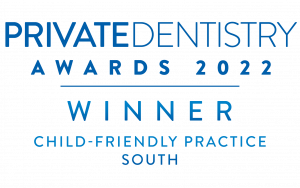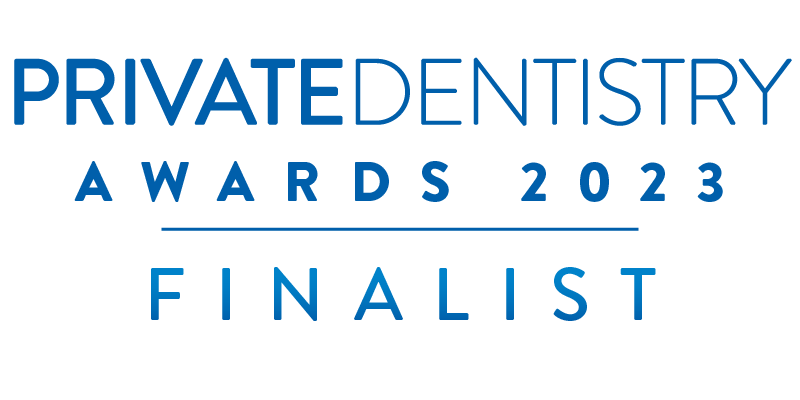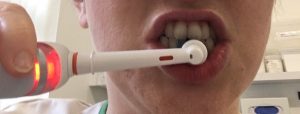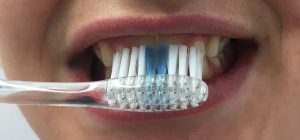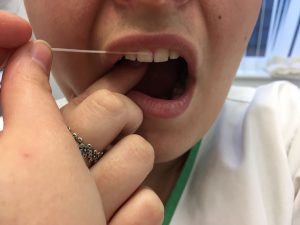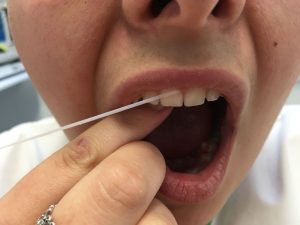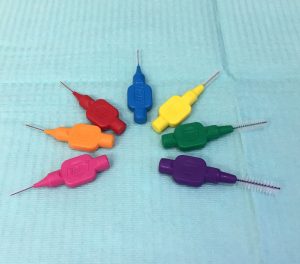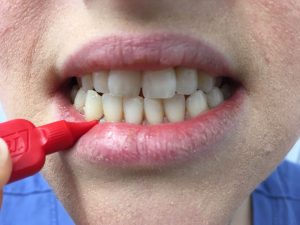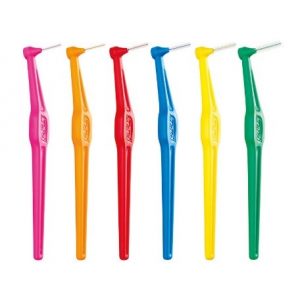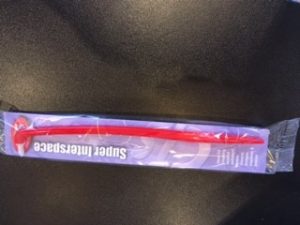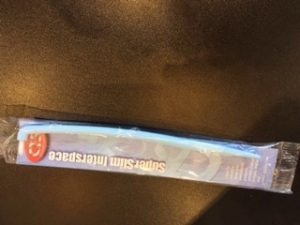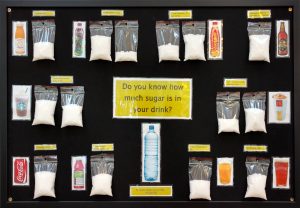Oral Hygiene advice
by Bev Beckett DipHE (Hygienist)

The most important weapon against gum disease is the cleaning done at home to remove bacterial plaque. Good oral hygiene is essential, this means effective brushing and cleaning in between the teeth twice every day.
Which brush?
Whilst some people do demonstrate a good brushing technique with manual brushes, evidence in studies has clearly shown that rotating/oscillating electric toothbrushes (I.E Oral B tooth brushes) are significantly more efficient at removing plaque. Use of an electric brush is therefore recommended.
How often to change the brush?
You should change your toothbrush (or tooth brush head if using an electric brush) approximately every 3 months. If the bristles are getting really splayed before that time then you may be pressing too hard, ask your hygienist or dentist for advice.
When and how long for?
Using a pea sized amount of a fluoride toothpaste (please ask your Dentist or hygienist if you want to know more about toothpaste types) Tooth brushing needs to be done for 2-3 minutes twice every day ideally in the morning and last thing at night.
2-3 minutes can feel like a very long time whilst brushing so it generally helps to have something to guide for time. I.E a timer/clock or listening to the radio.
Electric toothbrushes
There are lots of different types of electric toothbrushes and your Hygienist or Dentist can discuss what they think would be best for you. Most important features to look for are:
- A small round head
- Rechargeable
- Has a timer*
*Most electric toothbrushes do have timers but most do not have a display that shows the time, instead they “buzz” or “stop and start again” this usually happens every 30 seconds or sometimes they just switch themselves off when they reach 2 minutes.
If you have an Oral B toothbrush you can download the free App from the App store (Andoid or iPhone) – Oral-B app
Hold the head of the electric toothbrush at the gum line and allow it to linger on each tooth for a couple of seconds before ‘plodding’ slowly around the mouth 1 tooth at a time, always concentrating on the gum/tooth junction and making only minimal movements of the brush (gently jiggling the brush is enough). Spending equal time in all areas of the mouth, on both the fronts and backs of all teeth.
Allow the rotation of the bristles to do the work and resist large sweeping brush movements.
Your brush may have a pressure sensor (red light on the back of the brush) which will illuminate if you are pressing too hard.
Manual toothbrushes
If you are using a manual toothbrush ensure it has a small head with medium bristles (unless your Dentist or hygienist recommends anything different for you)
Angle the brush so the bristles are just under the gum line, where gum meets tooth, and use the ‘Modified Bass Technique’ (see video below):
Spending equal time in all areas of the mouth, on both the fronts and backs of all teeth.
Cleaning in between the teeth
Cleaning in between the teeth is Vital in controlling gum disease it is just as important as tooth brushing. Tooth brushing alone only reaches about 60% of the tooth surface area and the remainder (in between the teeth which is the most vulnerable area to gum disease) requires aids designed to fit between teeth to remove the plaque. Cleaning spaces between crowns, under bridges and around implants is perhaps even more important than around natural teeth, as there are additional junctions between materials where plaque can collect. Cleaning can be achieved using several different methods but it is essential to do it twice every day to adequately remove plaque.
What should you use?
Your hygienist will be able to tell you what the best thing is for you personally and how to use it effectively. People have different sized gaps in between their teeth so what is the best thing for one person might not be the best for you.
Flossing
Floss is widely available in different types. ‘Expandable’ types can prove softer and more comfortable to use and also ‘grab’ debris more readily.
Slide the floss between the teeth and curve it around the shape of the tooth either side of the gap, effectively ‘hugging’ the tooth to contact as much surface area as possible.
Allow the floss to slide gently below the gum line as far as it naturally goes without forcing it, as this is where plaque tends to accumulate.
Inter dental brushes/Tepes
These wire bristle brushes come in different sizes to fit the triangular space between teeth at the gum level. They are generally not designed to be passed up between the contact point (top) of the teeth unless teeth are very widely spaced. Your Hygienist can tell you what size or sizes you should be using.
They should be moved gently to and fro in the space against the side of each tooth to remove plaque and can be pre- curved to aid insertion into spaces further back in the mouth where cheek tissue can get in the way.
Tepe angle
Long handled versions with a fixed right angle at the end can also be very useful for reaching the back teeth
Interspace/single tufted brushes
These are long handled brushes with a small tuft of bristles, they can be very useful to get into awkward gaps (spaces where a tooth has been removed or is in a difficult position) that a tooth brush cannot easily reach.
Slim versions (or a standard one with the outside bristles trimmed away) can be used to clean down into gum pockets (where advanced gum disease is present) Please ask your Hygienist before trying this and they will tell you if it is appropriate for you and show you how to do it effectively.
Powered inter dental cleaners. These include devices like Waterpiks, Sonicare Airflossers and inter dental attachments on electric toothbrushes. Water, air and vibration are used to dislodge interdental plaque deposits. These are generally only effective on very tight gaps – Please ask your Hygieinst if this is appropriate for you.
Mouthwashes
These may be used as an additional aid to good mechanical cleaning but should not be considered a substitute for brushing/inter dental cleaning. There may be times when certain mouthwashes are particularly indicated, your hygienist or Dentist will advise you if they think this applies to you.
